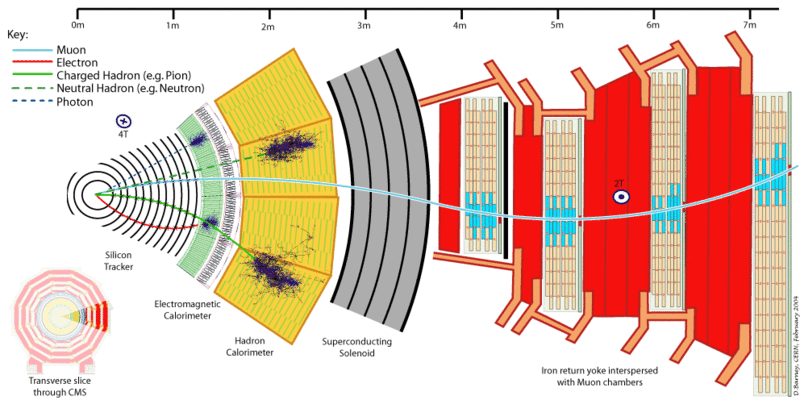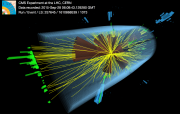One should have clear in mind what are the elementary particle interactions that the experiment studies, and what are the experimental observations that lead to the accumulation of data for the study.
Here is a picture of the CMS detector at LHC
It shows four outgoing particles, how they are observed/measured/defined by their trace in the various detectors.
One is interested in the crossection of the little tiny point in the center, by accumulating a large number of same type of measurements.
When the energy of the incoming target particles is small, one easily sees individual particles in the detectors , as with your question of meson decays. All outgoing are single tracks , for example the charged pion in the picture.
Jets in general are a great accumulation from the central region of a lot of tracks as the ones shown, where a number of them are bunched, rending a classical jet of particles.
An extreme number of such jets in this event, is recorded with the detector above:
This image shows a high-multiplicity collision event observed by the CMS detector in the search for microscopic black holes, in collision data recorded in 2015. The event contains 12 jets with transverse momenta greater than 50 GeV each, and the mass of this system is 6.4 TeV. The scalar sum of the transverse energies of all energetic objects in the event (including missing transverse energy) is 5.4 TeV.
So the energy in each jet is enormous, and the number of particles in each is large, and generally jets are attributed to quarks or gluons assuming most or the energy was carried off from the original interaction by one of the nonthese non free particles/quarks. The study of the jet particle contents is important, if there are leptons in it, if particular mesons can be defined, the jet is characterized accordingly in the analysis.


